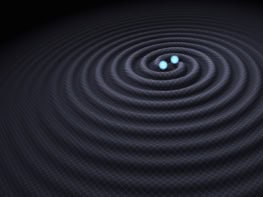By Hamish Johnston
Superfluid helium and magnetic fields are both in abundance in the Large Hadron Collider so it’s not surprising that some doomsayers have suggested that explosions called Bosenovae could occur in the accelerator’s cooling system.
Such explosions were first seen about ten years ago when an ultracold condensate of atoms was subjected to a carefully-selected magnetic field, which caused the normally-repulsive forces between atoms to become attractive. The condensate collapsed under these forces until it reached a critical density and then exploded outwards — much like an aging star becoming a supernova, but of course, on a much smaller scale.
So why couldn’t this happen in the LHC?
Well according to CERN’s Malcolm Fairbairn and Bob McElrath, this scenario is impossible because helium-4 atoms used to cool the LHC will simply not be attracted to each other when subject to any sort of magnetic field. The reason, according to the pair, is that the helium-4 nucleus does not have a magnetic moment and the atom has no unpaired electrons — both of which are needed to make the atoms attract each other.



